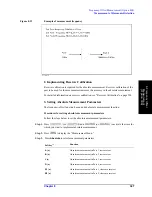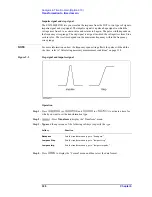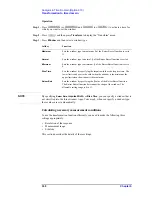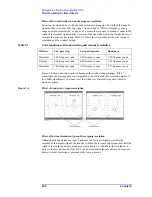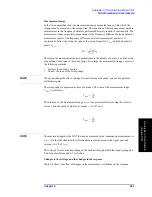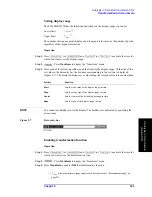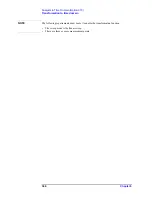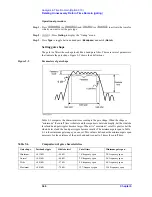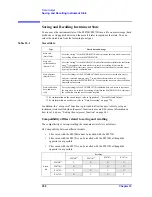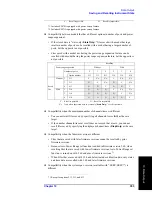
Chapter 9
341
Analysis in Time Domain (Option 010)
Transformation to time domain
9.
Analy
sis in T
ime Domain
(O
ption
010
)
Measurement range
In the time domain function, the measurement range means the range within which the
response can be measured without repetition. The repetition of the response occurs because
measurement in the frequency domain is performed discretely instead of continuously. The
measurement range is inversely proportional to the frequency difference between adjacent
measurement points. The frequency difference between measurement points
Δ
F
is
expressed as follows by using the span of the sweep frequency
F
span
and the number of
points
N
meas
.
Δ
F
F
span
N
meas
1
–
-----------------------
=
Therefore, the measurement range is proportional to the number of points
−
1 and inversely
proportional to the span of the sweep range. To enlarge the measurement range, use one of
the following methods:
•
Increase the number of points.
•
Narrow the span of the sweep range.
NOTE
When you change the above settings after performing calibration, you need to perform
calibration again.
The sweep range is expressed as time or distance. The time of the measurement range
T
span
is as follows:
T
span
1
Δ
F
-------
=
The distance of the measurement range
L
span
is expressed as follows using the velocity
factor
V
and the speed of light in a vacuum
c
(3
×
10
8
m/s).
L
span
Vc
Δ
F
-------
=
NOTE
The maximum length of the DUT that can be measured in the transmission measurement is
L
span
. On the other hand, in the reflection measurement, because the signal goes and
returns, it is 1/2 of
L
span
.
The velocity factor varies depending on the material through which the signal propagates:
0.66 for polyethylene and 0.7 for Teflon.
Changes in the settings and the changes in the response
Table 9-4 shows the effect of changes in the measurement conditions on the response
Summary of Contents for E5070B
Page 6: ......
Page 30: ...24 Contents ...
Page 34: ...28 Chapter1 Precautions Before contacting us ...
Page 286: ...280 Chapter6 Data Analysis Using the Equation Editor ...
Page 430: ...424 Chapter12 Optimizing Measurements Performing a Segment by Segment Sweep segment sweep ...
Page 538: ...532 Chapter15 Measurement Examples Executing Power Calibration ...
Page 634: ...628 AppendixB Troubleshooting Warning Message ...
Page 732: ...726 AppendixD Softkey Functions Trigger Menu ...
Page 740: ...734 AppendixE General Principles of Operation Data Processing ...
Page 760: ...754 AppendixF Replacing the 8753ES with the E5070B E5071B Comparing Functions ...

